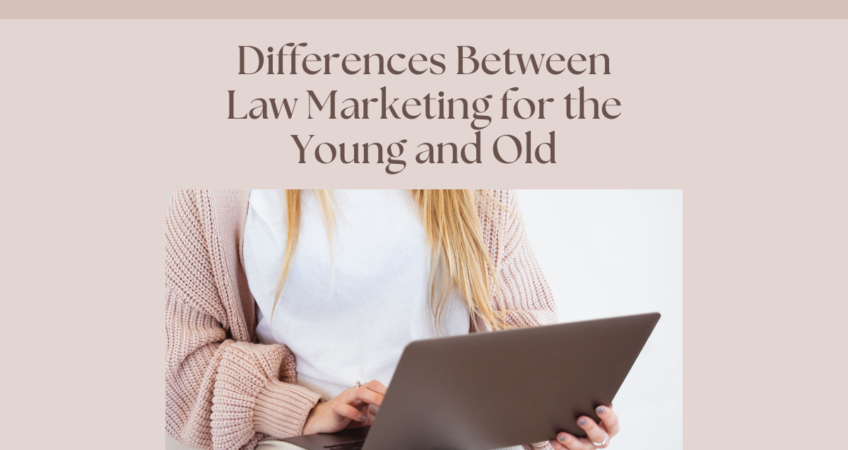
Differences Between Law Marketing for the Young and Old
Marketing legal services require a nuanced approach, considering different age groups’ diverse needs and preferences. Younger and older audiences often have distinct characteristics and communication preferences. Here is an article outlining the differences in law digital marketing in Los Angeles tactics for these two demographic segments.
Understanding Demographic Differences
Younger audiences, often categorized as millennials and Generation Z, have grown up in the digital age. They are tech-savvy, value authenticity, and are accustomed to constant connectivity. On the other hand, older audiences, including baby boomers and Generation X, maybe more traditional in their approach, preferring established communication channels and personal relationships.
Online Presence and Digital Marketing
For younger audiences, a robust online presence is crucial. Social media platforms like Instagram, Twitter, and LinkedIn can help law firms connect with this demographic. Content marketing, including blog posts, videos, and podcasts, can effectively engage younger audiences. Search engine optimization (SEO) ensures visibility on Google and other search engines.
In contrast, older audiences may respond better to traditional law marketing methods such as print ads, radio, and television. While they use the internet, they may not be as active on social media. Therefore, a balanced approach that includes online and offline strategies can effectively reach older demographics.
Communication Style
Younger audiences appreciate concise and visually appealing content. Marketing messages should be direct, relatable, and preferably presented in bite-sized formats. Video content, memes, and interactive graphics can capture their attention and convey legal information effectively.
Conversely, older audiences may prefer detailed written content and formal communication styles. Long-form articles, newsletters, and in-depth explanations can resonate with this demographic. Personalized communication, such as sending physical newsletters or direct mail, can also build trust with older clients.
Building Trust
Building trust is a crucial aspect of law marketing, regardless of the target audience. For younger audiences, showcasing a law firm’s values, social responsibility initiatives, and client testimonials through online platforms can help establish trust. Transparency and accessibility are key elements that resonate with younger clients.
Older audiences, however, may place a higher value on personal relationships and reputation. Testimonials from satisfied clients, case studies, and references from trusted sources can contribute to building credibility. Emphasizing the law firm’s experience and longevity in the industry can instill confidence in older clients.
Legal Technology Adoption
Younger audiences are generally more open to legal technology solutions. Offering online consultations, client portals, and legal tech tools for case management can attract this demographic. Mobile-friendly websites and apps are essential to cater to their on-the-go lifestyles.
Older audiences may be more cautious about adopting technology. Providing clear explanations of online processes, ensuring a user-friendly experience, and offering support for those less familiar with technology can make legal services more accessible to older clients.
Tailored Content and Messaging
Customizing content and messaging is critical for both age groups. Younger audiences may respond well to content that aligns with their social and environmental concerns, while older audiences may appreciate content that highlights experience, reliability, and a commitment to traditional values.
Conclusion
In conclusion, effective law marketing requires a thoughtful understanding of younger and older audiences’ distinct preferences and behaviors. Balancing traditional and digital strategies, adapting communication styles, and building trust through tailored approaches can help law firms successfully connect with a diverse clientele across age groups.

